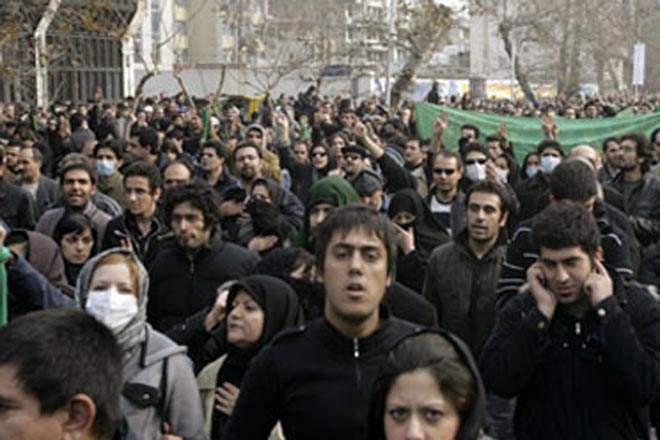Azerbaijan, Baku, Jan. 14 / Trend T. Konyayeva /
Reformist orientation of opposition protests continuing in Iran since June last year and grew into riots, is currently replaced by ever-growing dissatisfaction with the existing regime, the President of the Foundation for Democracy in Iran Kenneth Timmerman said.
"The popular protests inside Iran today have clearly gone way beyond the reformist agenda initially put forward by Mousavi and Karrubi," Timmerman told Trend via e-mail.
The internal political situation in Iran aggravated over the last year's presidential elections. As a result the current Iranian President Mahmoud Ahmadinejad won. Following the announcement of the election results the supporters of defeated opposition leader Mir Hossein Mousavi accused the authorities of rigging the election results and demanded their annulment.
In early December, a traditional meeting on the occasion of "Student Day", held in Tehran since 1953, resulted in riots when during the anti-U.S demonstrations three students died.
Representatives of the opposition organized rallies in Tehran on December 27, in a mourning day of Ashura, which marks the anniversary of the martyrdom of Imam Hussein.
Timmerman said one leader of the Green movement told him quite candidly that Mousavi and Karrubi and little more than "figureheads" today since current national movement aimed at overthrowing the regime in general.
As one of the signs of changing protest direction, he pointed at the changed slogans of demonstrators calling for Freedom, Independence, "Iranian" Republic as opposed to the "Islamic" republic they sought 30 years ago after the Islamic Revolution.
The Islamic Revolution is a chain of events in Iran in January 1978 and February 1979, which had led to the overthrow of Shah Mohammad Reza Pahlavi and the establishment of a new administration, headed by the Ayatollah Khomeini.
One thing that has frustrated the Iranian regime is the lack of a clearly-identifiable leadership committee running the protests, Timmerman said.
"The decentralized nature of the opposition leadership is strength and a weakness. It's a strength, in that it makes it harder for the regime to identity them and to eliminate them, and a weakness because it's somewhat more difficult to coordinate a grand strategy for toppling the regime," he said.
Timmerman has no doubt that as the movement grows it will become more mature, and that by this summer it will be clear whether the regime will live or die.
According to him, one key turning point in the coming months will be whether the Sepah, Iran's Revolutionary Guards, a military basis of authority, opens fire on street protests or not.
Until now, the Iranian elite military units did not participate in suppression of opposition's actions. They used police force to combat the insurgency and Basij unregular units to suppress insurrections.
The Sepah-e Pasdaran is divided: one faction is supporting Ahmadinejad, Khamenei and the brutal crackdown on the protests; another faction is appalled by the violence and is trying to stand apart, Timmerman said.
"I think if the Sepah is ordered into battle, it will refuse to turn its guns on the protestors. This will mark the beginning of the end of the regime," he said.






